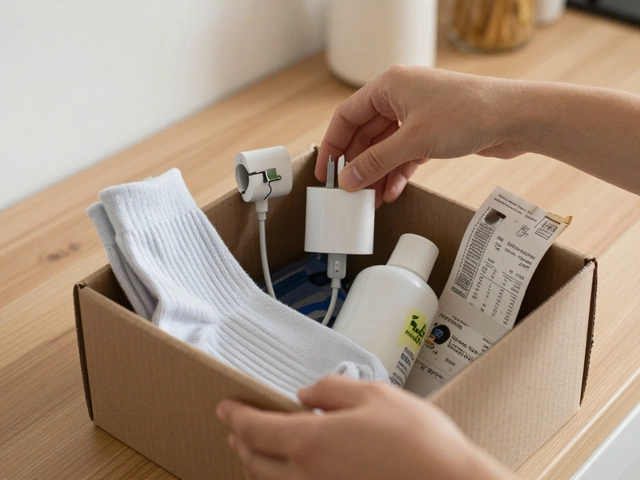Ever feel like your to-do list multiplies every time you look away? You’re not alone. Most folks today struggle to keep work from spilling into everything else—especially if you’ve got tiny humans, like my son Indigo, running around during Zoom meetings.
If you’re hoping for balance, let’s get real: it’s never about having equal time for everything. Balance means getting through your responsibilities without feeling burned out or missing the moments you care about most. One sneaky trick? Start each day with one must-do for work, and one for your personal life—write them down. It keeps your focus sharp and stops your brain from swirling with random worries.
Stop saying yes to everything. If a project or event isn’t important, don’t squeeze it in just because you feel pressured. Most people won’t even notice, and your energy is better spent where it matters. This simple move already clears up so much mental space—and that’s a big step toward balance.
- Why Work-Life Balance Feels So Elusive
- Setting Boundaries That Actually Stick
- Smart Planning Without Overcomplicating
- The Role of Technology (Friend or Foe?)
- Tackling Guilt and Perfectionism
- Real-Life Routines from Real People
Why Work-Life Balance Feels So Elusive
The truth? Most of us feel like work-life balance is a joke because the lines between work and home life keep getting blurrier. Gone are the days when you could just clock out and walk away. Now, work emails buzz on your phone at dinner, and meetings get scheduled outside of regular hours just because someone somewhere is available. Remote work, which skyrocketed since 2020, gave people flexibility but also took away the clear 'off' switch.
Here’s a quick look at numbers that show why it’s tricky:
| Factor | Percent of People Affected |
|---|---|
| Respond to work emails outside work hours | 64% |
| Feel pressure to be available after hours | 57% |
| Struggle to disconnect while working from home | 70% |
Technology is a double-edged sword. Sure, it keeps you connected, but it also means bosses, clients, and even coworkers can reach you 24/7. It’s hard to find time for real breaks when the expectation is to always be just a message away. Plus, if you’ve got kids or other family members under your roof, you probably need to juggle home tasks during 'work' hours—then catch up on work later, after bedtime. Cue the never-ending day.
Another sneaky reason? We keep hustling because everyone else looks busy, too. There’s this low-key competition, like if you aren’t always productive, you’re falling behind. Social media just adds to it—you see filtered versions of others 'doing it all' and feel like you should somehow catch up. Pretty impossible, right?
All this goes to show: real work-life balance is tough because there are legit forces pulling you in every direction. The good news? It's not just you, and you're not failing if it feels hard.
Setting Boundaries That Actually Stick
Here’s the thing about boundaries: saying you want them means nothing if you don’t stick to them, especially when it comes to work-life balance. Plenty of studies have shown that people who set clear work hours report way less stress. For example, a 2023 FlexJobs report found 70% of remote workers who created physical or time boundaries felt less overwhelmed by work after hours.
It sounds obvious, but you have to tell people your boundaries. A simple out-of-office reply, a work calendar that blocks “no meeting” times, or just refusing to answer work texts after dinner can change the whole tone at home. If you’ve got kids around (like I do), letting your family know when you need “focus time” avoids surprises and guilt on both sides.
Some easy actions to get started:
- Set your phone to “Do Not Disturb” for work and family hours—most phones let you customize this for different contacts.
- Have one spot in your house that’s just for work. When you leave that spot, you’re off the clock.
- Use a shared digital calendar so everyone at work and home knows when you’re busy or available.
What happens if you break your own rule? Don’t freak out. Boundaries only work if you treat them as real commitments, not suggestions.
| Boundary Strategy | Effectiveness Rating (out of 5) |
|---|---|
| Physical workspace separation | 4.6 |
| Turning off notifications after hours | 4.3 |
| Blocking calendar for family time | 4.0 |
Stuff is going to pop up. If you have to break a rule now and then, forgive yourself and reset. People who stick to their boundaries most of the time report better satisfaction at both work and home. You don’t need to be perfect, just consistent enough that others get the message.
Smart Planning Without Overcomplicating
Most people think that planning means you need fancy digital tools, color-coded calendars, or some productivity guru's latest app. But honestly? Simple planning works best for busy lives. Studies from the American Psychological Association show that people who use a basic daily checklist are 25% more likely to finish their tasks compared to those who don't.
Don’t waste time building complicated schedules you’ll never follow. Here are a few straightforward ways to bring some order into the chaos:
- Work-life balance starts with making a short list each day—no more than three big things. You’ll never finish a massive list anyway, and unfinished tasks just stress you out.
- Batch similar tasks together. For example, answer all your emails in one chunk instead of stopping every time your inbox pings.
- Use a simple calendar—paper or digital. Google Calendar is free and does the job. Schedule everything, even small stuff like ‘call mom’ or ‘get groceries.’ The less you keep in your head, the better.
- Plan for buffer time. Build in a 15-minute gap between meetings or after school runs. Real life doesn’t run on the dot, and this will keep your day from unraveling at the first surprise.
If you’re looking for numbers, check this comparison. People who planned with simple systems versus those using high-maintenance methods:
| Planning Style | Avg. Tasks Completed Per Day | Reported Stress Level |
|---|---|---|
| Simple (3-task list, basic calendar) | 7 | Low |
| Complex (multiple tools, strict routines) | 5 | High |
When life gets unpredictable—and it will—you’ll thank yourself for keeping your planning short and sweet. The right plan is the one you actually use, not the one that looks great on Pinterest.

The Role of Technology (Friend or Foe?)
Tech is like that friend who can be super helpful—and a bit of a troublemaker. On one hand, apps and devices help us stay connected, work remotely, and manage crazy schedules. But the catch? Constant pings and emails make it tough to shut off. Many people end up working longer just because their phones are always nearby.
According to a 2023 Gallup survey, about 54% of remote or hybrid workers said technology made it harder to set work boundaries. That’s not a fluke—people who check email after hours can experience up to 40% more stress compared to those who don’t.
| Tech Habit | Impact on Work-Life Balance |
|---|---|
| Checking work email outside work hours | Boosts stress by 40% |
| Calendar blocking | Raises productivity by 27% |
| Using "Do Not Disturb" mode | Increases focused time |
So, how do you make tech work for you—not against you? Here are a few easy wins:
- Work-life balance gets a big boost when you turn on “Do Not Disturb” after work—set your phone to block notifications except from family.
- Use a shared family calendar app (like Google Calendar) to keep everyone in the loop, but don’t overload it with work stuff.
- If your job allows, stop auto-syncing work emails to your phone. Check them from your computer only, and only during working hours.
- Try the “one screen at a time” rule: if you’re with your kids or friends, ditch the work screen completely. It sounds simple, but it’ll help you stay present.
The trick is setting firm limits and letting tech do the heavy lifting—without letting it boss you around. Test different boundaries and see which ones leave you feeling less stressed and more in control. And don’t beat yourself up for tweaking settings ten times until it feels right.
Tackling Guilt and Perfectionism
It’s wild how much guilt can sneak into everyday life, especially when you’re trying to keep your job and personal stuff in line. There’s this constant voice that says, “You should be doing more.” Turns out, this is super common, especially for working parents. A 2022 survey from FlexJobs found that 75% of remote workers felt judged when setting boundaries, and 60% dealt with guilt about not doing enough at work or at home.
If perfectionism is your thing, you probably find yourself stuck fixing tiny details or “doing it all” before you let yourself rest. But here’s what researchers from the American Psychological Association have shown: perfectionists have higher rates of burnout and are more likely to feel unsatisfied, even when they’re doing just fine. Honestly, chasing perfect kills your energy, and nobody benefits—not your boss, not your family, not you.
So, how do you deal with this? Try these steps to keep guilt and perfection habits in check:
- Notice the guilt triggers. Keep a note on your phone listing situations that make you feel guilty. Patterns start to show pretty quick.
- Set “good enough” standards. For example, decide that answering emails within 24 hours is enough, instead of checking your inbox every hour.
- Treat self-care as non-negotiable, not a reward. When you carve out time for yourself, you set the tone for everyone else.
If you think you have to be a superhero at work and home, remember that chasing perfection usually just means missing real life. You wouldn’t expect a friend to handle it all. Why hold yourself to that standard?
| Perfectionism Facts | How It Affects You |
|---|---|
| Leads to 50% higher risk of burnout (APA) | Less energy for work-life balance |
| 60% admit guilt for not "doing enough" (FlexJobs, 2022) | Harder to say no or take a break |
Bite by bite, ditch the guilt and replace “perfect” with “done is good enough.” You free up space for the good stuff—family time, a hobby, or just a nap when you need it.
Real-Life Routines from Real People
I’ve talked with lots of parents, freelancers, and even a couple of overwhelmed teachers about how they make the whole work-life balance thing more than just wishful thinking. The truth? Most of us don’t get it perfect. But the folks who feel healthiest have small routines that fit their real lives—not some influencer fantasy.
Take Anna, a project manager and mom of two in Dallas. She sets her work laptop to shut off at 5:30 PM—literally, it powers down automatically. She swears by this because she can’t "just check one more email" if her computer refuses. This little tech hack cuts late-night stress and helps her show up at dinner, mentally present.
Or look at Dave, a hybrid worker in Chicago. He uses his first morning coffee to plan three things each for work and family. No more, no less. He says, if he gets those six things done, the rest can wait. Studies from Stanford University back this up: people who limit their daily task lists actually report feeling less overwhelmed and more productive.
Single parents like Mia, a nurse, keep things simple—she batch preps meals every Sunday, makes "Do Not Disturb" signs for her kids during her home office hours, and promises herself two guilt-free evenings a week for Netflix with zero chores. She admits the house isn’t spotless, but everyone’s happier (and healthier) because she gets real time to recharge.
- Automate downtime—set gadgets to log you out when needed.
- Make a short, non-negotiable daily list—work and home stuff.
- Don’t feel bad about saying no to what doesn’t matter long-term.
- Carve out small breaks: even ten minutes for yourself can reset your mood.
- Lean on routines, not strict schedules—real life always goes off-script.
If you try routines that fit your real situation, you’ll get closer to the balance you’re looking for. There’s no need for big complicated systems—just habits you can stick with, even as life gets chaotic.









